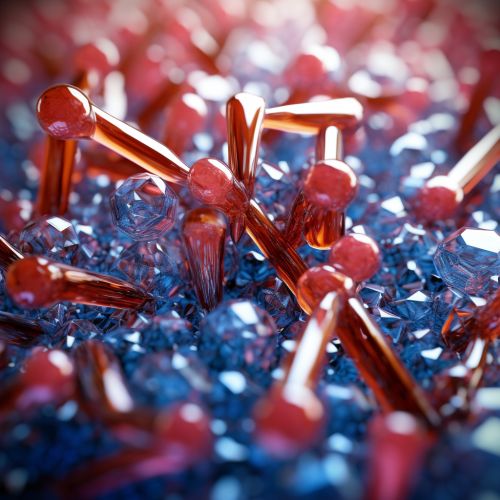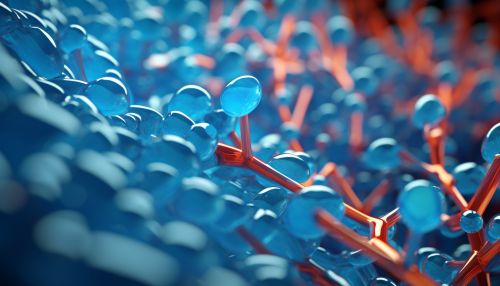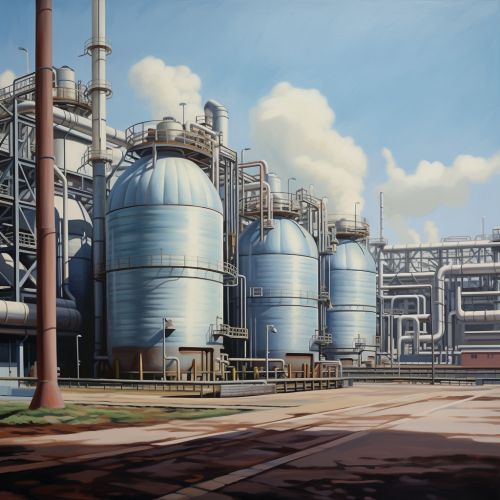Nitrogen fixation
Introduction
Nitrogen fixation is a critical biological process where atmospheric nitrogen (N_2) is converted into ammonia (NH_3). This process is vital for life on Earth as it provides the essential nitrogen that is required by most organisms to create amino acids and nucleotides, the building blocks of proteins and DNA, respectively. Nitrogen fixation is primarily performed by certain bacteria and archaea, known as diazotrophs.
Biological Nitrogen Fixation
Biological nitrogen fixation is carried out by a diverse group of microorganisms known as diazotrophs. These organisms can be free-living in the soil or water, or they can form symbiotic relationships with plants, particularly legumes. The enzyme responsible for this process is nitrogenase, a complex metalloenzyme that catalyzes the reduction of nitrogen to ammonia.


Nitrogenase
Nitrogenase is a two-component enzyme system consisting of dinitrogenase and dinitrogenase reductase. Dinitrogenase is a molybdenum-iron protein that binds and reduces N_2 to NH_3, while dinitrogenase reductase is an iron protein that provides the electrons necessary for this reaction. The nitrogenase enzyme complex is highly sensitive to oxygen, which can irreversibly damage the enzyme. Therefore, diazotrophs have evolved various strategies to protect nitrogenase from oxygen damage.
Diazotrophs
Diazotrophs are a diverse group of bacteria and archaea capable of nitrogen fixation. They can be free-living or form symbiotic relationships with plants. The most well-known diazotrophs are the rhizobia, a group of bacteria that form symbiotic relationships with legumes. Other notable diazotrophs include cyanobacteria, which are capable of nitrogen fixation in aquatic environments, and Azotobacter, a genus of free-living soil bacteria.
Symbiotic Nitrogen Fixation
Symbiotic nitrogen fixation occurs when diazotrophs form mutualistic relationships with plants. The most well-known example of this is the relationship between legumes and rhizobia. In this symbiosis, the rhizobia fix nitrogen in exchange for carbohydrates from the plant. This symbiotic relationship is facilitated by the formation of specialized structures called nodules on the roots of the legume.
Nodule Formation
Nodule formation is a complex process that involves signaling between the plant and the rhizobia. The plant secretes flavonoids that attract the rhizobia, and in response, the rhizobia produce nodulation (Nod) factors that trigger nodule formation in the plant roots. Once the nodules are formed, the rhizobia enter the plant cells and differentiate into bacteroids, which are the nitrogen-fixing form of the bacteria.
Industrial Nitrogen Fixation
In addition to biological nitrogen fixation, nitrogen can also be fixed industrially through the Haber-Bosch process. This process, developed in the early 20th century, involves the reaction of nitrogen and hydrogen under high pressure and temperature to produce ammonia. The Haber-Bosch process is the primary method for producing nitrogen fertilizers, which are essential for modern agriculture.


Environmental Impact
While nitrogen fixation is essential for life, it can also have significant environmental impacts. Excessive use of nitrogen fertilizers can lead to nitrogen pollution, which can cause a range of environmental problems, including eutrophication of water bodies, acid rain, and the production of greenhouse gases. Therefore, understanding and managing nitrogen fixation is crucial for maintaining environmental health.
